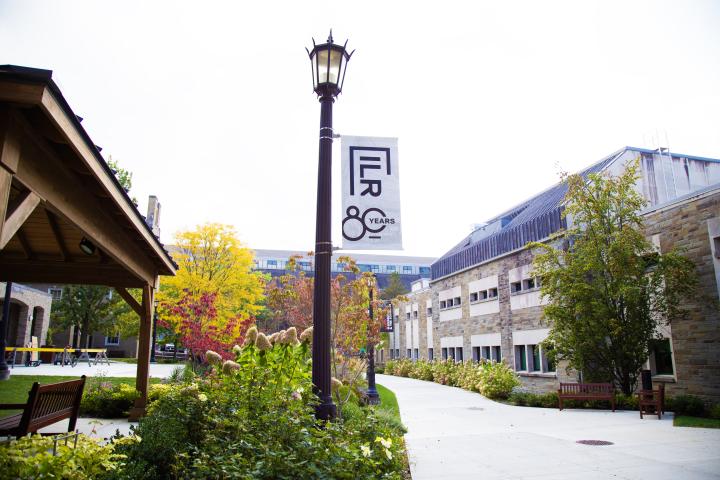
Kristina Francillon spends winter break learning about labor unions in Haiti
With the help of the ILR International Grant, I spent two weeks in Port-au-Prince, Haiti, learning about a variety of unions at the confederation of labor unions, Confederation des Travailleus Haitiens (CTH). My experience was not limited to the office and I gained a first hand perspective by visiting a number of plant sites. Unfortunately, my internship was cut short due to the earthquake. However, I learned a great deal from this experience including the Haitian people's ability to display solidarity in times of despair. Although my experience this winter break was atypical, it helped me understand Haitian people's courage and compassion; while encouraging me to put my life into perspective as well.
CTH encompasses a number of labor unions each focused on a particular industry, such as photography, domestic labor, artists, textile, transportation, and government agency among others. Most leaders of CTH were not present at the office on a daily basis, as their positions were unpaid. They often held positions in governmental agencies, where they continued to promote freedom of association.
During my time there, I interviewed these leaders but spent a considerable amount of time with those focused on female workers, photographers, and artists. Ginette Apollon, leading the movement for female workers in factories and domestic work took me on a field trip to two unionized government agencies, APN (Association Portuaire National) for workers at the ports, and the ONA, a social security agency.
At APN, I was shocked to see that the union had its own office at the plant, which goes beyond traditional recognition from the employer, when compared to the US. Nevertheless they continued to face employer opposition. APN’s situation was quite unique, as ONA did not have the privilege of a union office at the plant. Moreover, the union director, who is also an employee (also known as a salt from labor history class) indicates that he deceived the employer by falsely reporting union membership numbers, in order to decrease employer opposition. Thus these plants demonstrate significant differences in the labor movement in comparison to the US due to strong union presence in the plant. Nevertheless, unions in Haiti continue to face employer opposition as they would in any country.
Ms. Apollon planned on taking me to Parc Industriel, a district of international factories in Port-au-Prince. These factories are highly occupied by women, and workers immediately deny the desire to join a union when representatives of CTH contact them, which the organization believes employers program them to say. The ILO’s Better Work division organized a meeting last October in Port-au-Prince, to encourage foreign investment and increase jobs in the garment sector.
The program promoted freedom of association, but CTH representatives indicated that this policy was not practiced. They blamed local directors who pocketed funds, rather than allowing union interference, which may jeopardize profits. However, the earthquake inhibited our plans of visiting these plants.
Despite the tragedy, I was able to look at this natural disaster, as a way for Haiti to rebuild in all of its sectors. It is an opportunity to strengthen the labor sector and decrease the estimated 75% unemployment rate through education, training, and solidarity among others. The quake has encouraged all its witnesses, including myself, to reconsider our priorities in life, to focus on helping one another and to promote justice, which I believe includes freedom of association as well.


